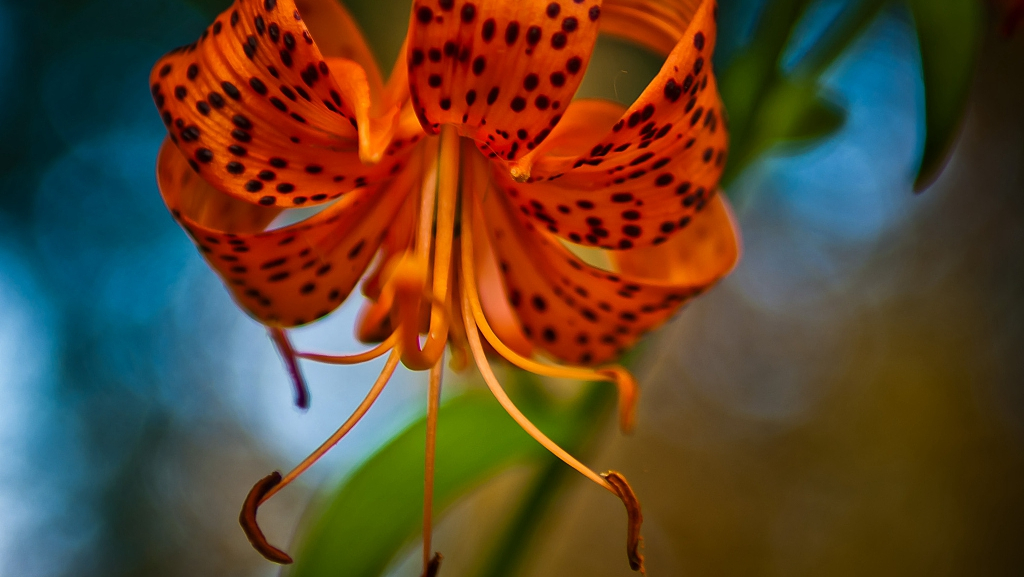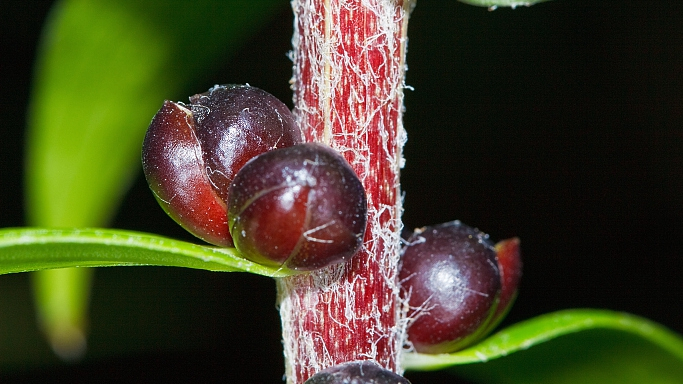The Tiger lily stands out among the lily plant family, thanks to its unique, tiger-like spots. The plant's inner petals are covered with dark brown spots, which get denser as they near the center of the flower.
The eye-catching flower has a long history as an ornamental plant. It was even found in a Tang Dynasty (618-907) mural.

The petals of the tiger lily are covered with dark brown spots. /VCG Photo
The petals of the tiger lily are covered with dark brown spots. /VCG Photo
Unlike white lilies whose scent plays a role in attracting pollinators, the tiger lily does not have a scent and has no nectar. However, its sticky pollen and spots attract insects and help it pollinate.

The tiger lily's spots attract insects for pollination. /VCG Photo
The tiger lily's spots attract insects for pollination. /VCG Photo
The Tiger lily has a low germination rate, so it also relies on bulbils, which are actually "seeds" that grow between the leaf and stem of the plant when it blooms. The tiger lily's bulbil is purple-black. If left alone, they eventually fall to the ground and form roots.

The bulbil of the tiger lily is purple-black. /VCG Photo
The bulbil of the tiger lily is purple-black. /VCG Photo
It takes three to four years for these bulbils to grow into a new plant. So, although the tiger lily has been artificially cultivated, many wild tiger lilies have become scarce due to consumption and picking.
China's Flora Tour
From the wetlands along the coast to the dense rainforests hidden in southwestern China, all boast an array of plant species. In this series, CGTN will go on a tour to learn about some of the most representative floras in different provinces and see how they live in harmony with the local geography and climate.
(Cover image via VCG, designed by CGTN's Liu Shaozhen.)
(If you want to contribute and have specific expertise, please contact us at nature@cgtn.com)